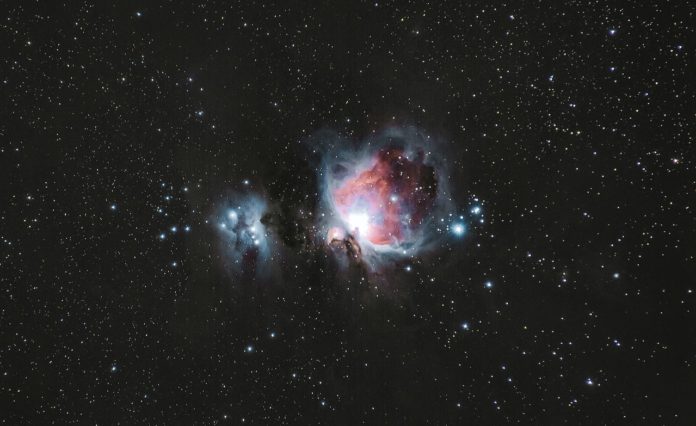Astronomers have long known that the most massive stars lead the most explosive lives, but catching these stars in their final death throes can be tricky.
Thanks to archival observations from the Hubble Space Telescope, however, a team of astronomers recently got the chance to study images of an exploding star before and after going supernova — and what they found was totally different from what they’d been expecting.
The study included contributions from Maria Drout, an assistant professor of astronomy and astrophysics at the University of Toronto, and was published in the Monthly Notices of the Royal Astronomical Society.
A supernova’s rare before and after shots
Massive stars are known to burn through their fuel quickly, eventually exploding into dazzling supernovae before collapsing in on themselves to form ultra-dense neutron stars or black holes — two extreme objects that still puzzle astronomers today.
Yet while some aspects of this life cycle are well understood, predicting exactly when these stars are going to explode is difficult. Astronomers also aren’t entirely sure where the boundaries lie between stars that do explode into supernova and stars that don’t, or how exactly different classes of supernova form.
Unfortunately, all these open questions means that astronomers typically only get to see supernova explosions after the fact, and they miss out on crucial insights into what happens before these explosions occur. Being able to compare a star before and after its explosion would help astronomers understand where these boundaries lie, as well as which types of stars can lead to which types of explosions.
In a lucky break for the team of astronomers behind the study, however, it turns out that a supernova explosion they witnessed in 2019 had already been observed. This allowed them to get a rare look at what happened before the explosion occurred.
“What was so exciting here was actually having the ability to have a look at [the supernova] beforehand,” Drout explained in an interview for CBC’s Quirks and Quarks.
“[I]t just so happened that the Hubble Space Telescope had looked at this patch of the sky […] about two and a half years before the supernova exploded.”
When the team looked at these archival observations, they realized that only one star was present at the location of the supernova. This star must therefore have been the progenitor to the supernova explosion, which allowed the team to get a rare look at what happened before and after it occurred.
Not what they’d been expecting
After studying the rare before shot in more detail, the team was surprised to find that the star wasn’t anything like what they’d expected.
While this particular type of supernova explosion (known as a Type Ib) is thought to come from very hot, blue, compact stars, the star they observed was yellow, cool, and large. It was also surrounded by an envelope of hydrogen gas — yet the supernova explosion the team observed two years later didn’t contain any hydrogen gas at all.
“This is not what our expectations would be,” Drout said. “This is not what theoretical models predict.”
While the team still isn’t entirely sure how a cool, yellow star could become a Type Ib supernova, they believe that some sort of cataclysmic event in its recent past might have triggered this unusual event.
For example, a violent eruption from deep within the star might have caused it to lose that hydrogen envelope. Another possibility is that the gravity from a nearby companion star might have stripped off the hydrogen gas, revealing a hotter, bluer core within the star that later exploded.
Both of these theories require immense changes in the star over the timescale of only a few years, however, which is much quicker than astronomers might have expected. The observations will require astronomers to reconsider their theories about stellar evolution. This could open the door to many more stars being considered as possible progenitors for supernova explosions, which in turn could help astronomers learn more about the stellar remnants these explosions will become: the mysterious neutron stars and black holes.
“A big question in this field has always been what stars exactly are exploding as supernova,” Drout explained.
“This will have a ricochet effect into understanding things like how many black holes do you expect, and how massive they should be, which are important things we’re trying to learn about in astrophysics.”









































